Why can't I get what I want now? Video Transcript
Why can't I get what I want now?
I thought supply chains were supposed to make things flow smoothly and quickly to the customer!
In this lesson, you will learn about the factors that influence the flow of goods; differences between public relief and private sector supply chains; and the relationship between cycle time, lead time, and inventory.
As you engage in this lesson, think about these questions.
- How do each of the supply chain process stages affect when I get the products I need?
- Why does private sector inventory management operate differently than in the government sectors?
- What inventory management strategies can Emergency managers use to make sure people get what they need when they need it?
- How can an event in another area affect supply chains in my jurisdiction?
Let's get started.
Lesson 2 Objectives
At the end of this lesson, you will be able to:
- Describe supply chain inventory, its purposes, and its locations in the supply chain
- Describe the concept of lead time and its impact on supply chain flow
- Explain the relationship between cycle time, lead time, and inventory
This lesson should take approximately 20 minutes to complete.
Why isn't it in stock?
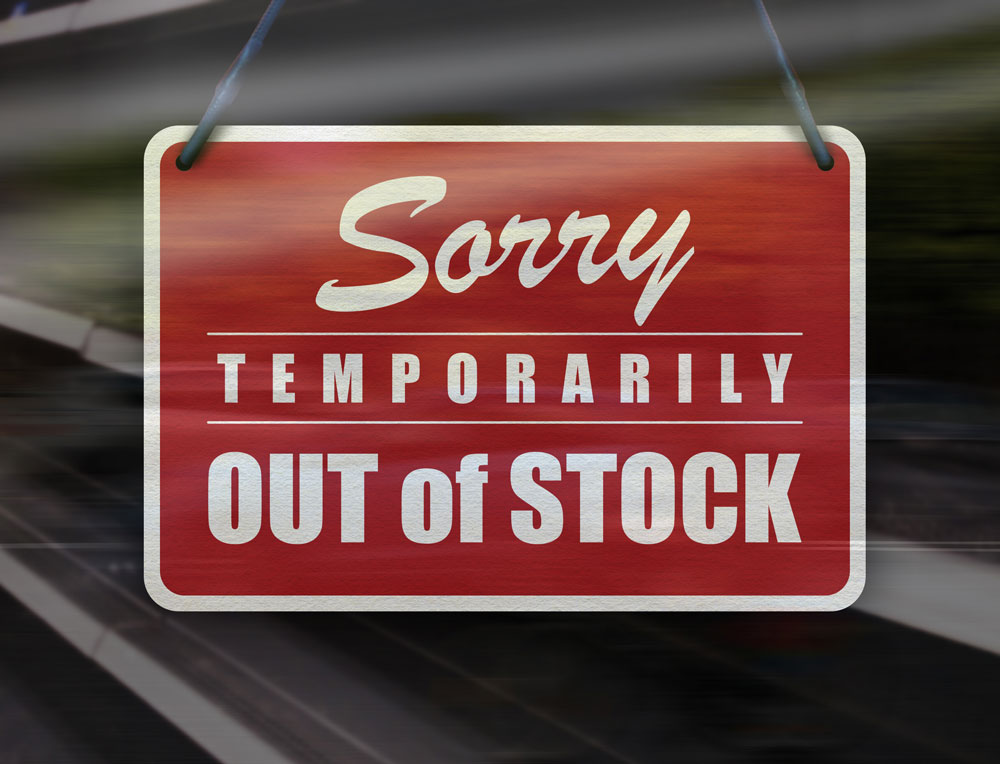
- Shortages and backorders are the result of when a company does not have the product available in inventory. The results of not being able to obtain what you want when you need it can range from the disappointing to the life-threatening.
- Inventory, also called "stock," is the quantity of material (raw materials, components, or finished goods) stored at any point in the supply chain. Raw material suppliers, component vendors, manufacturers, warehouses, wholesalers, and retailers all maintain inventory.
- Companies maintain inventory so they can meet their demand forecasts. It is a fine balance to keep the sufficient stores on hand while minimizing the amount of capital locked up in inventory. Too much inventory is a drain on profitability. Too little inventory can result in lost sales.
- Inventory is often measured in units of time, as in the days left before the need to resupply, rather than in the specific number of pieces on hand.
- Changes in demand and production output both have a direct impact on a company's inventory levels. When production outpaces demand, inventory builds up. When demand outpaces production, the inventory buildup is drawn down.
Types of Inventory
Raw materials are the first inventoried goods in most supply chains. Goods needed for the production cycle are next. Products that are not finished, or Work-in-Progress goods, are created and finished goods are the final result. Goods in transit to warehouses, distribution centers, and retail outlets are transit inventory. Merchandise are the finished goods that a seller buys from its suppliers for future resale.
Transcript: Types of Inventory
Raw Material: Raw or unprocessed materials are the basic materials to produce goods. These are the primary resources a business needs for production.
Work-in-Progress Goods: The work-in-progress (WIP) inventories are partially finished or semi-finished goods.
Finished Goods:Finished goods are also referred to as ready-for-sale products.
MRO Goods:Maintenance, Repair, and Operating (MRO) inventories are items used to keep the machines and other equipment running, for example, lubricants and tools.
Merchandise: Merchandise are the finished goods that a seller buys from its suppliers for future resale.
Transit Inventory:Transit, or pipeline inventories, are the inventories that haven’t been purchased yet and are on their way to another location.
Anticipation Inventory: To meet predictable and some unpredictable future demand, a manufacturer warehouses or a seller purchases and holds excess inventories. Anticipation inventories make sure items are available when demand rises.
Buffer Inventory: The availability of agricultural products often varies depending on drought, freezes, animal diseases, and other weather conditions. To protect themselves from wild increases and decreases in the price of these goods, some companies and governments stockpile these goods when the price is low. The buffer stock can be later used when there are demand surges or shortages.
Spare Parts Inventory: Companies maintain an inventory of important parts of their machines and equipment for when machines need maintenance or repair.
Cycle Inventory: Cycle inventory is inventory purchased in bulk to last an entire cycle for a production lot. Buying in bulk sometimes provides cost savings, but those savings could by warehousing expenses.
The Private Sector View of Inventory
Transcript: Private Sector View on Inventory
A risk-reduction factor: Sometimes inventory is maintained as safety stock, kept on hand to respond to unanticipated surges in demand.
An investment: It costs companies money to make a product, but they don’t make any money until the product is sold. The longer it sits in their warehouses, the more money they lose.
An opportunity cost: Money that is tied up in inventory could be used elsewhere.
A competitive advantage: Companies utilize sophisticated inventory control systems to minimize inventory costs and fulfill demand. This increases the profitability of the company and the potential for repeat customers.
Just-in-Time Inventory and Manufacturing: Video Transcript
Managing inventory is one of the most important activities in a supply chain. Raw materials, components, or finished goods need to arrive to the manufacturers, retailers, and to the consumers in the right order, the right quality, right location, and at the right time.
Many companies have embraced Just-in-Time (or JIT) management to maximize their production efficiency and minimize inventory warehouse expenses. Just-in-Time is an inventory management strategy in which goods are received from suppliers only as they are actually needed. For a manufacturer, this means the raw materials and supplies arrive just before the production cycle begins. For retailers, this means that sales trigger a reordering mechanism and merchandise is rapidly replenished.
Under the JIT system, inventory levels are kept low, which maximizes production efficiency and minimizes expenses. However, JIT requires a precise monitoring of consumer demand. Overestimation of demand can result in excessive inventory and a reduction in profit. Underestimation of demand can result in empty shelves and lost sales.
Public Sector Inventory Issues
Although relief supply chain inventories, like those maintained by FEMA, are vitally important as an insurance policy against disaster disruptions, federal and state procurement and inventory management practices are not profit driven and are subject to business practice inefficiencies.
Select the buttons on the screen to learn more about public sector inventory issues.
Transcript: Public Sector View on Inventory
Over purchasing: Many federal, state, and local government agencies maintain inventories in excess of their current needs. Ineffective inventory management sometimes results in shortages and poor service delivery.
Commodity protection: The federal government maintains inventory to help to stabilize the price and availability of essential commodities in times of national crisis. It does so by buying excess inventory from the market. It then sells the “buffer stock” when market supply is insufficient to meet demand.
Waste: A substantial portion of buffer stock goes to waste because of improper storage and upkeep. Products often expire before they can be used.
Procurement process: Federal, state, and municipal governments have strict and time-consuming procurement procedures. Depending on the location of the agency, multiple levels of government requirements may need to be met (for example, the New York Housing Authority must follow US Department of Housing and Urban Development, New York State, and New York City procurement regulations).
Higher cost: The cost of storing equipment and commodities is often added to the procurement price. Some contracts require purchases to be made from “preferred” providers who can charge more. These and other issues make government-purchased goods more expensive than those purchased from a retail outlet.
Relief Supplies Inventory Miscalculations
- To get the greatest amount of relief supplies to people in need in the most efficient manner, Emergency Managers tend to push their inventories all the way down to the end of the relief supply chain.
- After a disaster, trailer loads of water, food, and other essential items are delivered to a parking lot. Pooling relief supplies in one location provides a central location for transportation. However, the stockpiled items might not match demand and some products will rot or expire if they aren't transferred quickly. If transportation is disrupted, the practice becomes extremely wasteful.
- In these cases, a more effective practice would be to hold the inventory back a level and deliver targeted supplies directly to the people in need.
Relief Supplies Inventory Miscalculations: Audio Transcript
Hello, this is Nicholas Peake, an Emergency Management Specialist at FEMA Headquarters where I have been developing and delivering supply chain guidance for emergency management since 2015.
A mismatch between inventory and the people in need happened during the early distribution of the COVID-19 vaccine in late 2020.
During Operation Warp Speed, constrained inventory was rushed to perceived points of demand and got stuck there. Millions of vaccines were delivered to loading docks across the country, but states were unprepared to receive them. States were on their own to develop plans and systems to store and distribute the temperature-sensitive vaccines. Appointment scheduling websites crashed under the demand and non-internet savvy people were shut out of the system.
The vaccine supply network was not able to respond to actual points of demand.
Think About Your Inventory Options
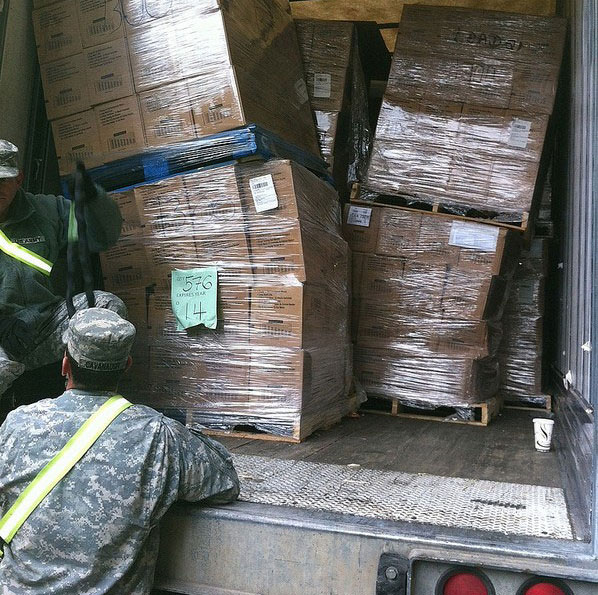
- What relief supplies are likely to be in demand?
- What are your current logistical plans?
- What might be some different options for relief supply inventory management?
How long does it take to process my order?
- There are many factors that contribute to how long it takes to receive what you ordered.
- Each of the process stages takes time to complete. Disruptions and delays at any point of the supply chain can increase the lead time required to get items on store shelves or delivered to your door.
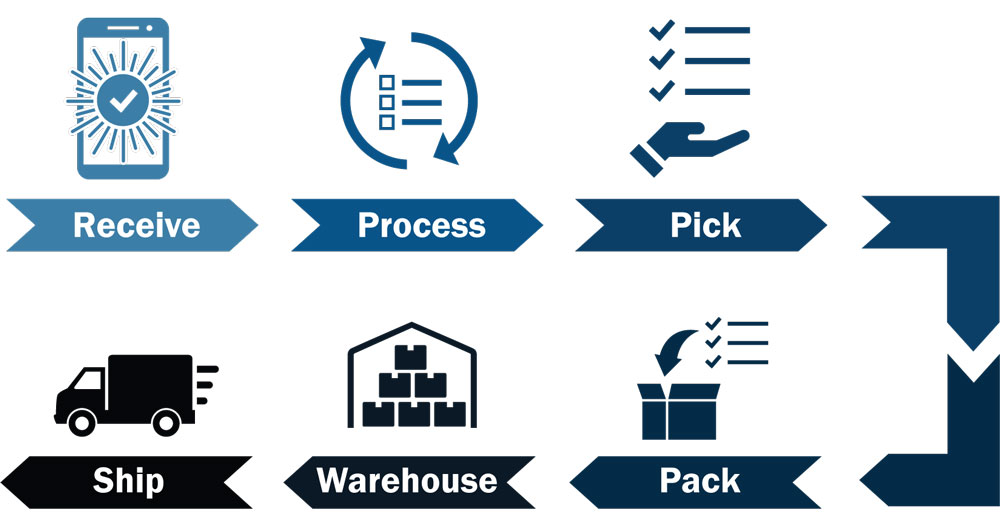
Cycle Time is a Part of Lead Time: Video Transcript
Like inventory levels, the lead time needed to get the product to a consumer is an important metric in supply chain management. To understand how long it takes for an order to be fulfilled, it is necessary to recognize the difference between cycle time and lead time and know how they interact with each other.
Cycle time measures how long it takes to produce the needed units. For example, cycle time starts from the time when the assembly line is started to the time when the table is completed.
Lead time measures how long it takes from when the customer places an order until they receive the product. It encompasses the order processing cycle, the manufacturing cycle, the packaging and shipping cycle, and the delivery cycle.
Increases in the time needed to complete any cycle extend the lead time to the customer. Delays can be caused by shipping issues with overseas suppliers, inefficient ordering, unreliable demand forecasting, inventory mismanagement, and disruptions due to work slowdowns or natural and man-made disasters.
To recap, cycle time measures the time from the start of manufacturing to the end of manufacturing, while lead time measures the time elapsed between customer order and delivery.
Lead Time Considerations
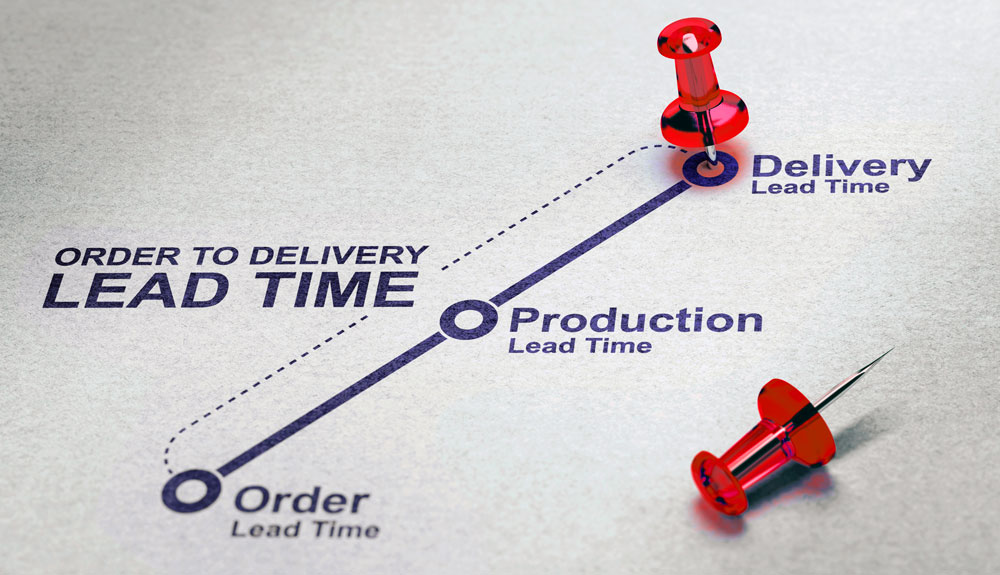
- Manufacturers and producers depend on suppliers for components and raw materials. The lead time to get those necessary inputs affect their own lead times. Supply chain managers need to consider supplier lead times when deciding when to reorder more components or materials so they can have the necessary inventory on hand to meet production schedules.
- Supply chain managers also need to consider their own company's lead time when deciding how much inventory to hold to meet upcoming high-demand seasons.
Lead Time Considerations
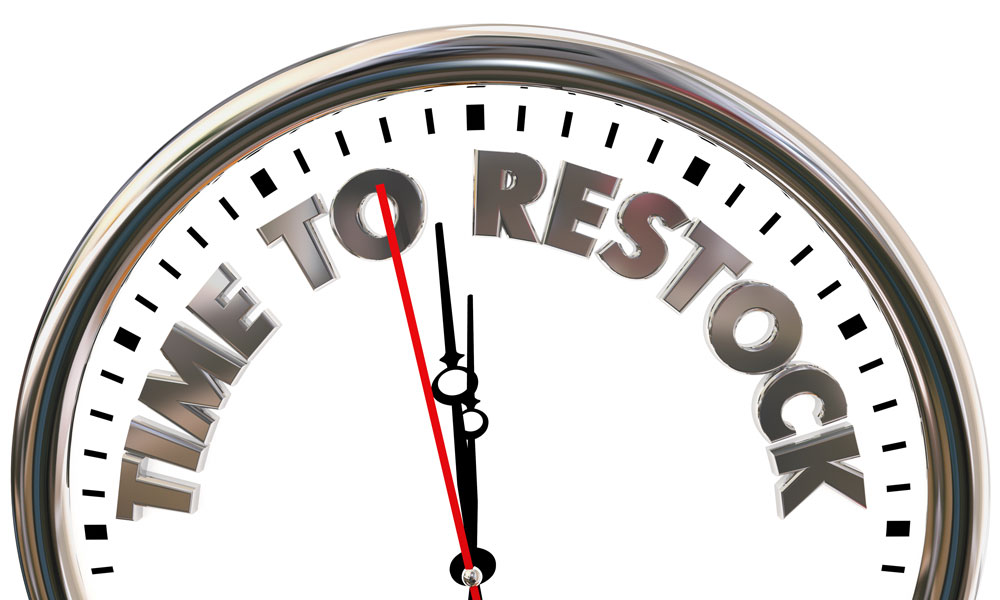
- The time required to replenish depleted inventory for a product directly correlates to the length of its production cycle time. A long cycle time means long periods when a product is on back order.
- The longer a company's lead time is, the more stock it will need to hold in its inventory and the longer it will take to recover from a disruption.
- When demand spikes are predictable, manufacturers will overproduce in advance to have sufficient inventory to meet anticipated high demands. Manufacturers, retailers, and distributors prepare well in advance for “blue sky” demand shifts like Black Friday and Back to School sales. Seasonal weather patterns, like hurricane season, also prompt some companies (and the government) to stockpile “gray sky” inventories.
- Overproduction can also happen if demand forecasts are flawed, as in the case of hand sanitizer. In the early days of the COVID-19 pandemic, manufacturers were unable to meet the global demand for the product. Predictions for continued high demand encouraged many manufacturers to boost production and many companies joined the market. Eventually, the market became flooded with hand sanitizer around the same time that the panic buying surge subsided.
Inventory and Lead Time: Video Transcript
Inventory on hand can almost eliminate the lead time for a customer.
For example, if a customer buys a computer from a retail store which has it in stock, the lead time would be zero. However, the cycle time to produce the computer, all the way from sand to silicon to semiconductors to circuit boards to laptop, could take a year or more.
Inventory can also buffer the effects of a disruption on the supply chain. For example, if fuel distributors maintain high inventories at intermediate depots just before a hurricane, drivers in the affected region may not feel the effects of a temporary pipeline interruption. That is because the pipeline is likely to be restored before gas station inventories are exhausted.
Thinking of a product’s lead time in terms of “Days of Inventory” can help Emergency Managers understand how much time they have left to work with supply chain managers to create a contingency plan.
Ripple Effects of Disruptions

- Supply chains are massive ecosystems comprising raw material sourcing, manufacturing, transportation, retail and wholesale, information technology, and financial entities.
- Many supply chains have similar dependencies: power, transportation networks, finance, etc. Disruptions to a single dependency can have rippling impacts across all supply chains in an area. For example, the loss of a key transportation route like the George Washington Bridge would seriously disrupt, delay, and constrain freight movements into New York City.
Out-of-Jurisdiction Disruptions
- Sometimes a disruption centered in one area can affect multiple states or territories. The cyberattack that shut down the 2021 Colonial Pipeline affected some of the country's largest fuel markets in the Southeast and New England. Panic-induced buying extended to southern Florida, which was not impacted by the pipeline outage.
- Similarly, about 80 percent of food and consumer goods received by Puerto Rico and the U.S. Virgin Islands comes from the U.S. mainland and is transported through Florida. Goods are routed through the Port of Jacksonville to the Port of San Juan in Puerto Rico, then to St. Thomas, then to St. John and St. Croix.
- While Hurricane Irma (2017) did not cause significant damage to the Jacksonville port directly, truck deliveries and availability were disrupted throughout Florida and just beginning to return to normal when Maria struck.
- Marine carriers operating between the United States and Puerto Rico faced disruptions for the entire month of September.
Lesson 2 Summary
By now, you should be able to:
- Describe supply chain inventory, its purposes, and its locations in the supply chain
- Describe the concept of lead time and its impact on supply chain flow
- Explain the relationship between cycle time, lead time, and inventory


